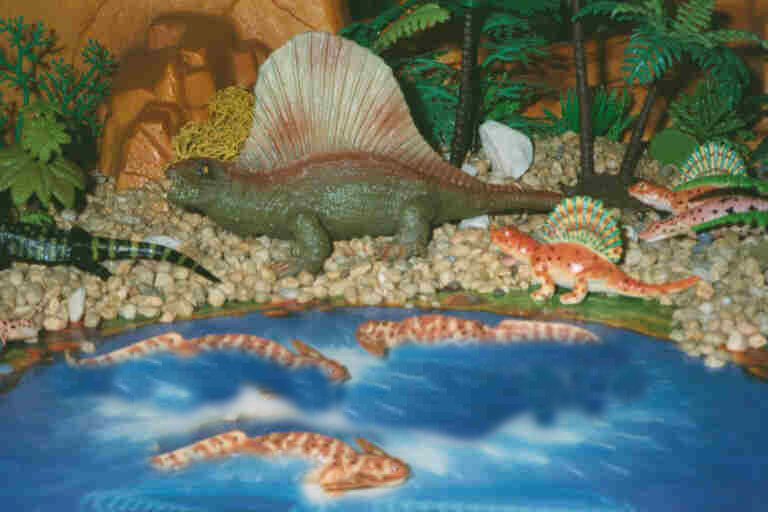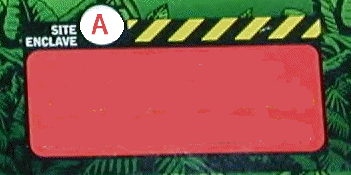Early Permian
from the Dinosaur Collector
updated 010713 proof 020606 rjk
The Permian is the last period of the Paleozoic. Reptiles have evolved and dominated the top predator slots, though amphibians are still important in fish eating roles and as plant eaters. Reptiles evolved 3 distinct families; the synapsids (ancestors of mammals), the diaspids (ancestors of lizards, snakes, crocs, birds and dinosaurs) and anaspids (ancestors of turtles and some extinct groups). The synapsid Pelycosaurs were the dominate family of the early Permian.
At the start of the Permian, the glaciers began to retreat as the temperature rose; this caused the characteristic red beds. Life was largely confined around tropical wet lowland environments. New forms of animals and plants that would dominate the Later Permian began to develop in the dry high lands.

The AAA Company makes large and medium size Dimetrodons, and to the right is the new large Carnegie Safari figure.
The most common amphibian was Diplocalus, which seems to be a little small to be the primary food source for Dimetrodon, was most common member in the lowland assemblages.

Dimetrodon is the most popular non-dinosaur member of the dinosaur play sets; easily identified by the fin on its back. There has been a great deal of attention devoted to showing it was device to help control body temperature, though if this is true it is hard to understand why many close relatives lacked a fin and seem to have thrived. The amphibian Platehysterix also developed a fin, possibly for the same reasons.

A Bullyland Dimetrodon, and the Playvision amphibians Diplocaulus and Platehysterix.
